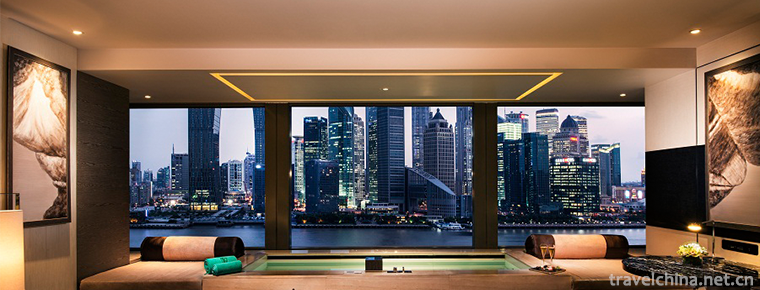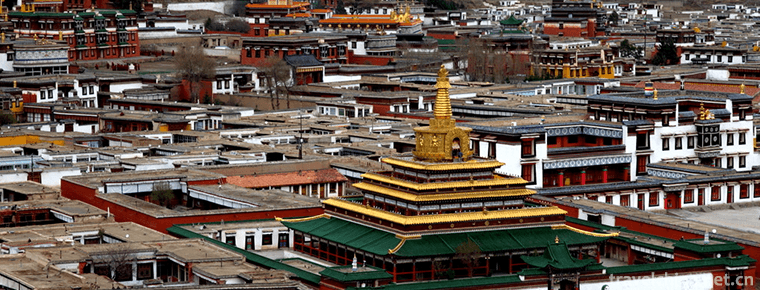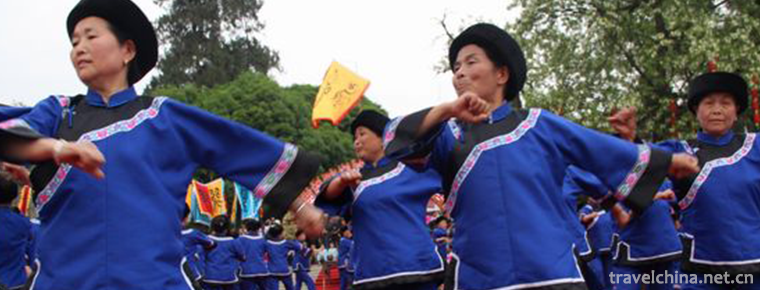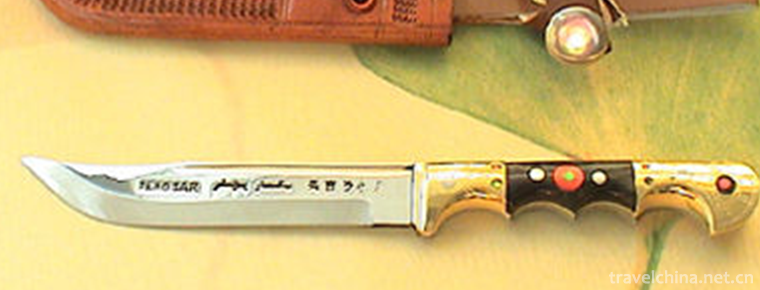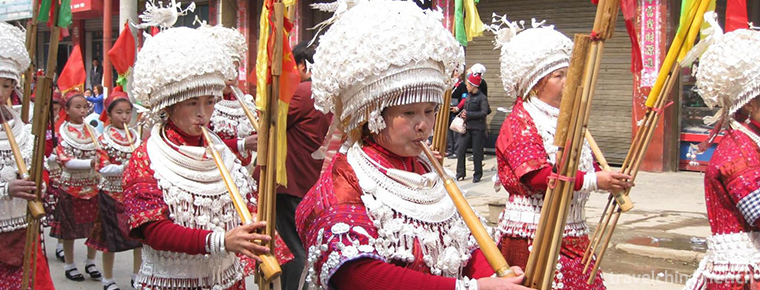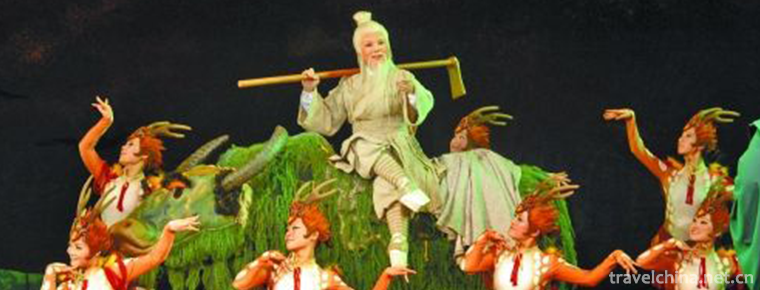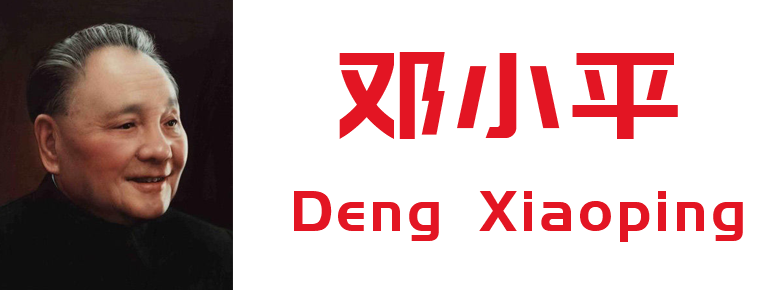Wu zhen ancient town
Wuzhen, located in Tongxiang, Jiaxing City, Zhejiang Province, is located in the "Golden Triangle" of Jiangsu, Zhejiang and Shanghai, the hinterland of Hangzhou-Jiahu Plain, 60 kilometers away from Hangzhou and Suzhou, 106 kilometers away from Shanghai. It belongs to the drainage system of Taihu basin, and rivers are interwoven vertically and horizontally. The Grande Canale, Beijing and Hangzhou have passed by.
Wuzhen was originally divided into Wuqing Town and Wuzhen in Hexi, which belonged to Wucheng County, Huzhou Prefecture, and Qingzhen in Hedong, Tongxiang County, Jiaxing Prefecture. After liberation, Wuzhen was designated as Tongxiang County in the west of the city. It was called Wuzhen.
Wuzhen is one of the first batch of famous historical and cultural towns in China, the top ten charming towns in China, the beautiful towns in the whole country and the 5A-level scenic spots. It is known as "the last pillow-water family in China". It has a history of more than 7000 years of civilization and 1300 years of town-building history. It is a typical ancient town in the south of the Yangtze River in China and is known as "the land of fish and rice and the house of silk". . It has a history of six thousand years. It is the twenty golden week forecast spot in the whole country and one of the six ancient towns in the south of the Yangtze River. In 1991, it was named a famous historical and cultural city in Zhejiang Province. Since 2013, Wuzhen Drama Festival has been held. On November 19, 2014, it became the permanent site of the World Internet Congress.
In 2017, the gross domestic product of Wuzhen reached 6 billion 31 million yuan, an increase of 12.1% over 2016.
Wuzhen has a long history. According to the textual research of Tanjiawan ancient cultural sites in the suburbs of Wuzhen, about 7000 years ago, the ancestors of Wuzhen thrived there. At that time, it belonged to the Neolithic Ma Jia Bang culture.
In the spring and Autumn period, Wuzhen was the border of Wu Yue, and Wu was here to guard against Vietnam.
In the Qin Dynasty, Wuzhen belonged to Huiji County, bounded by Chexi River, Wudun County in the west, Wucheng County in the East and Qingdun County in the east. Subsequently, Wuzhen or Zhejiang, Huzhou or Jiaxing, or Jiangsu's Suzhou governance.
In Tang Dynasty, Wuzhen belonged to Suzhou Prefecture. The rear beam belongs to Wu Yue's land. In the five years (940 years) of Tianjin in Tianjin, it was put in Xiu state, and Qing Tun was then Jiaxing county.
Song Chunhua three years (992 years), Wuzhen belongs to Wu Cheng Li Huzhou. In the ten years of Xining (1077), five townships in the west of Jiaxing County, such as Wutong, Yongxin and Qingfeng, were returned to Chongde County. Qingzhen is located in Qingfeng Township, belonging to Xiuzhou, Chongde County. In the early years of Yuanfeng, there were records of Wu Dun town and Qing Dun Town, and later it was taboo for avoiding light. It was renamed Wuzhen and Qing town. During the period of Jiading, Jiaxing was promoted to the army, and the Qing town belonged to Jiaxing army of Chong De Li. Baoqing two years (1226) changed Huzhou to Anji and Wuzhen to Wucheng County, Anji. In the Song Dynasty, the town was set up to supervise the town officials, to control fire prohibition and liquor tax, and to recruit troops to practice martial arts so as to protect the robber.
From the Yuan Dynasty to the 14th year of the Yuan Dynasty (1277), Wuzhen is Wucheng County of Huzhou Road, and Qingzhen is Chongde County of Jiaxing Road. All the sites are inspecting.
In the fifth year of Xuande in Ming Dynasty (1430), the author analyzed Tongxiang County in six townships of Chongde County: recruitment, Qianjin, Baoning, Qingfeng, Yongxing and Wutong. Qingzhen belonged to Jiaxing Prefecture, while Wuzhen still belonged to Wucheng and Huzhou Prefecture. This relationship remained unchanged until the Qing Dynasty. During the Ming and Qing Dynasties, special branch offices of Zhejiang and Jiangsu were set up in Wuzhen to perform the functions of a small town equivalent to a government.
In the first year of the Republic of China (1912), the two towns of Wu and Qing remained divided.
In May 1950, the two towns of Uzbek and Qing were merged and called Wuzhen, belonging to Tongxiang county and Jiaxing.
Until 2016, Wuzhen has 16 villages under its jurisdiction: Baimadun, Fenshuidun, Jiefang Bridge, Fulan Bridge, Chenzhuang, Hongqiao, Nanzhuang Bridge, Henggang, Pengjia, Chen Jia, Shuangta, Yanjia, Minhe, Zheyue, Xinweng and Wuxing, and three communities under its jurisdiction: Dongyuan, Nangong, Ginkgo, 18 Fengxian Road, the residence of the town government.
It lies in the east longitude 120 degrees 54 ', and the north latitude 30 degrees 64'. Located at the north end of Tongxiang City, east of Beijing-Hangzhou Grand Canal, west of Huzhou City and north of Wujiang District of Suzhou City, Jiangsu Province, it is the junction of two provinces and three cities. There are county-level highway Yao-Seismic Line running through the town. Through Yao-Seismic Highway, it can connect with provincial highway Salt Lake Highway, National Highway 320, 318 Highway, Shanghai-Hangzhou Highway, Shenjiahu Highway and Chajiasu Highway. Wuzhen is 13 kilometers away from Tongxiang City and 27 kilometers, 45 kilometers and 60 kilometers away from Jiaxing, Huzhou and Wujiang. The town area is 71.19 square kilometers, and the built-up area is 2.5 square kilometers.
Wuzhen is located on the southeast coast, which is a typical subtropical monsoon climate. Warm and humid, abundant rain, abundant sunshine, annual average sunshine 1842.3 hours, with the characteristics of long spring and short autumn, cold winter and hot summer, warm spring and cool autumn, four distinct seasons. Spring is 78 days in a year, 90 days in summer, 64 days in autumn, and 133 days in winter. The average annual temperature is 16.1 degrees Celsius. The coldest month in January, the monthly average temperature is 3.6 degrees C; the hottest month in July, the monthly average temperature is 28.1 degrees C; the annual average precipitation is 1233.9 millimeters. There are three distinct precipitation periods in the whole year, namely, April-May (spring rain), June-July (plum rain), August-September (autumn rain), and snow in winter.
Donggai Scenic Spot was officially opened to the outside world in 2001. The first phase of the scenic spot covers an area of about 0.46 square kilometers. The protected building area is nearly 60,000 square meters. The tour distance is 2 kilometers. It consists of Donggai Old Street, Guanqian Street, Waterfront Pavilion and Corridor. After the completion of the project, it covers an area of about 1.98 square kilometers and has more than 10 scenic spots.
Xizhai Scenic Area, located in Xijie Street, adjacent to the Beijing-Hangzhou Grand Canal, has a highway directly to the urban areas of Jiangsu, Suzhou and Tongxiang, with convenient transportation. Unlike east gate, tourism and tourism are the main factors. Covering an area of 4.92 square kilometers, the river is more than 9,000 meters, and there are 72 ancient bridges. The River density and the number of stone bridges are the highest in ancient Chinese towns. There are 250 thousand square meters in Ming and Qing Dynasties, 1.8 kilometers in the West Street, and 1.8 kilometers across the river. The north is more than 50000 square meters of natural wetland.
Jiangnan Baibei Museum is the first museum in China that specializes in collecting and exhibiting ancient beds in Jiangnan. It is located at 210 Dongjie, also known as Zhaojia Hall. It covers an area of about 1200 square meters and exhibits dozens of fine ancient beds in Ming, Qing and modern times. The first exhibition hall exhibits: Ming Horseshoe foot large tubular shelf bed, using wooden frame construction form, emphasizing the line image of furniture shape; the second exhibition hall has Qing Babu thousand work bed, made of boxwood, 217 cm long, 366 cm deep, 292 cm high, a total of three years of carving, more than 1000 workers, so it is named.
The government of Jiangsu Province and Zhejiang Province were called the zhe Zhi sub branch in the Ming Dynasty, which is a unique government organ in the history of Wuzhen. The duty inspects the salt to arrest the thief, simultaneously the local word lawsuit, commonly known as the two government Yamen. It took more than 370 years since the establishment of Jiajing in Ming Dynasty and its abolition in the early Republic of China.
The Jiangnan Folklore Museum showcases the folk customs of Wuzhen from the late Qing Dynasty to the Republic of China, such as the rites of birthday celebration, marriage and childbearing, and the seasons of the year. The wax figure molded the wedding drama. The clothing and customs hall shows the folk custom of dress in the south of the Yangtze River a hundred years ago by means of objects, wax figures and photographs. The Festival Hall demonstrates different customs of Wuzhen people in different seasons of the year, such as Spring Festival, Lantern Festival, Qingming Fragrant City, Lixia Libra, Dragon Boat Festival, Dragon Assembly, Tianyi Sunworm, Zhongyuan River Lamp, Mid-Autumn Moon Festival, Chongyang Heighting, Winter Solstice and ancestor worship. The wedding hall takes the wedding hall as the center, displaying the lively scene of the wedding through the characters of the new couple, matchmaker, parents, sedan chair, dowry and so on. The theme of Shou Custom Hall is to celebrate the birthday of the elderly. It shows the auspicious scenery and paintings, Shou Zhao, Shou Tao and Shou Mian of the hall.
Jiangnan woodcarving exhibition hall, originally known as the East Gate Xu Jia Zhai, also known as Baihua hall, is famous for its exquisite woodcarving. The main rooms are displayed in ancient Chinese woodcarving products. Wood carving is rich in materials, such as "Eight Immortals Crossing the Sea" and "Guo Ziyi's Birthday" folklore, such as "fishing", "fighting crickets", "beating gongs and drums" and other life scenes, as well as "Dragon and Phoenix Chengxiang", "Squirrels eat grapes", "Meilan bamboo chrysanthemum" and other traditional patterns, which depict the folk customs with Jiangnan local characteristics.
Yu Duoliang Coin Museum, Yu Duoliang, a native of Wuzhen, has a large collection of coins. He has written more than ten academic monographs, such as "Chinese Spending", "Chinese Appreciation and Collection", "Coin", "Coin Talk", "Outline of Coin Science", "World Circulating Coin". Over the past 40 years, it has collected more than 26000 kinds of coins from more than 230 countries and regions in the world. Among them, there are metal currency, paper money and money. The materials are gold, silver, copper, iron, tin, aluminium, lead, antimony, pottery, nickel, paper, bamboo, bone, glaze, plastics and other 15 kinds, from Xia Dynasty to modern times.
Wenchang Pavilion is determined to build a pavilion on the river front of the college, known as the Wenchang Pavilion. Between the academy and the cabinet, there is a wide Guanqian Street. When the old scholars went to Wenchang Pavilion, they usually accompanied by a small boat. The boat is moored at your river port. The scholar goes upstairs and the descendants sit and wait on the benches on both sides of the aisle.
The view of truth,
In Wuzhen. In the first year of Xianping in the Northern Song Dynasty (1998), Taoist priest Zhang Dongming tied the knot here to cultivate the truth and acquire the truth, and to create the concept of "cultivating the truth". And Suzhou Xuan Miao, Pu Yuan Xiang Yun Guan and Jiangnan three Avenue view, the status is extremely lofty. There are three halls in the view of practicing truth, one for the mountain gate, two for the Dongyue Hall and three for the Jade Emperor's Pavilion; on both sides, there are ten halls for the King of Yan, Marshal of Pestilence, God of Wealth and other supporting halls; and the square in front of the mountain gate is open and magnificent. There is a huge abacus hanging directly above the mountain gate, and a couplet of books under it: "Man has a thousand arithmetic, heaven is one arithmetic", which is very alert to the world.
Mao Dun's former residence is a key cultural relic protection unit in China. It is located at No. 17, Guanqian Street, east of Shihe River. It has four rooms and two entries. It is a two-storey wooden building with a total area of 450 square meters. There are two units in the East and West. It is Mao Dun's great grandfather who bought two times. Including bedroom, study, dining room and so on, furniture and layout are still the appearance of Mao Dun when he first lived.
Ancient stage, Xiuzhenguan stage is a subsidiary building of Taoism. It was built in the 14th year of Qianlong (1749) in Qing Dynasty. It has been destroyed as often as Xiuzhenguan stage. It is now renovated in 1919 and covers an area of 204 square meters. It is located in the north of Guanqian Street, which is opposite to Xiuzhen Street. It faces Dongshihe River in the South and Xinghua Bridge in the east. The platform is two stories, and the rest is rooftop. The bottom floor is built of brick and stone, with side doors and front doors. Side door Tonghe port. There is a small staircase on the back of the bottom, or it can be lowered from the river to the boat through the gate. The building is divided into two parts: the back is the dressing room, the front is the stage, and the square is opposite.
Huiyuan pawnshop, between the home bridge and South Huaqiao, the five bay facade, upstairs and downstairs, 1.8 meters high counters. According to the Records of Wuqing Town, there were 13 pawnshops in Wuzhen at most. By 1931, only one pawnshop in Huiyuan was still supporting. The pawnshop is surrounded by a high wall and is built with a high stone head at the foot of the outer wall, which makes it impossible for the burglars to turn over the wall and dig holes, and even for the upgraded buildings which are higher than the roof, some people watch day and night. The door is made of thick ginkgo wood, which is not easy to ignite. It is covered with iron and has solid latches and floor latches. Entering the gate is about the emperor's hall, showing loyalty and justice as the foundation, and the pursuit of evil. TD is the shop hall, the trading place for the collection, the high counter and the wooden fence. The owner of the article handed the clothes to him, so that when the imperial court commanding the highest price, the price would be low. Hou Dai is a storehouse. For fire prevention, the houses of Dai and Dai are not connected, and the seven stone cylinders filled with water in the courtyard are called "Taiping cylinders". Huiyuan pawnshop is Xu Donghao's ninth generation sun Xu Huanzao (Ming Xiang), founded in Daoguang.
The wooden heart Museum, which was built in 4 years, was the curator of Chen Danqing, a student and painter of Mu Xin. The museum displays paintings and manuscripts of different periods of wood core, and has small movie houses. Behind the wooden heart, there are over 600 paintings and thousands of literary manuscripts. After careful selection, there are about 100 paintings and 50 manuscripts.













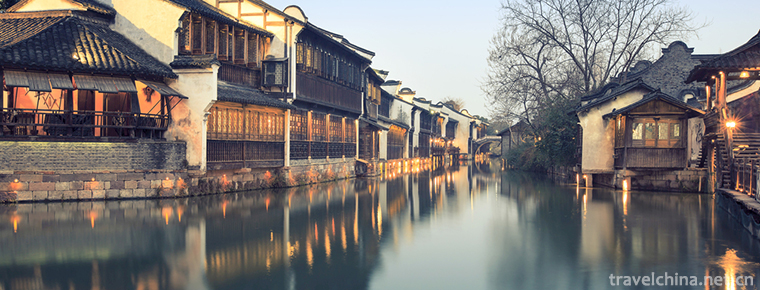
-
Arctic Village Tourism Scenic Area
Arctic Village Tourist Scenic Spot: National AAAAA Class Tourist Spot, the most attractive scenic spot in 2014, and the northernmost scenic spot in China..
Views: 244 Time 2018-12-05 -
Banyan Tree Shanghai On The Bund
Shanghai, one of the largest cities in the world, has a vibrant urban atmosphere, impressive urban skyline and rich and colorful culture. Located in the center of the city and resting on the Bank of H.
Views: 485 Time 2018-12-16 -
La blun Temple
Labrang Temple is one of the six main monasteries of the Gelug Sect of Tibetan Buddhism. In 1982, Labrang Temple was listed as one of the key cultural relics protection units in China.
Views: 153 Time 2019-01-29 -
Wulingyuan
Wulingyuan Scenic Spot is located in the northwest of Hunan Province, central China. Its longitude is 110 20'30 ~110 41'15 and latitude is 29 16'25 ~29 24'25.
Views: 150 Time 2019-02-24 -
Zhaozhou Bridge
Zhaozhou Bridge, also known as Anji Bridge, is situated on the Juanhe River in Zhaoxian County, Hebei Province. It spans more than 37 meters across the river. Because all the bridges are built of ston.
Views: 178 Time 2019-03-17 -
Linxia brick carving
Linxia brick carving (also known as Hezhou brick carving) is a practical art closely combined with buildings. Linxia brick carving matured in the Ming and Qing dynasties, and in modern times it absorb.
Views: 115 Time 2019-05-13 -
Tujia Waving Dance
Hand-waving dance is an ancient traditional dance of Tujia nationality. It mainly spreads in the Youshui River and Wujiang River basin at the junction of Hubei, Hunan, Chongqing and Guizhou. It mainly.
Views: 106 Time 2019-06-23 -
Uygur traditional knife making skills
Xinjiang handicraft knives (Yingjisha knife, Guizi knife, etc.) are generally more than ten or twenty centimeters long. The largest is more than half a meter and the smallest is only about two inches..
Views: 153 Time 2019-06-26 -
Hulusheng Dance of Yi Nationality
Hulusheng Dance of Yi Nationality, the traditional dance of Wenshan Zhuang and Miao Autonomous Prefecture in Yunnan Province, is one of the national intangible cultural heritage..
Views: 104 Time 2019-07-12 -
Extra tune
In addition to the form of opera, Yue Diao has two branches, namely, opera and puppet. In 1942, there was a severe drought in Henan Province. During this period, many cross-tone artists (such as Zhang.
Views: 263 Time 2019-07-16 -
Deng Xiaoping
Deng Xiaoping (August 22, 1904 -1997 February 19th), formerly known as Deng Xiansheng, the scientific name of Deng Xixian, Guang'an, Sichuan. Go to Europe early Work study program After his return, he.
Views: 330 Time 2019-09-07 -
Guangyuan transportation
Guangyuan has been the transportation hub and material distribution center in the adjacent areas of Sichuan, Shaanxi and Gansu since ancient times. The reconstructed Guangyuan new railway station includes Baoji Chengdu double track railway and .
Views: 79 Time 2020-12-15

